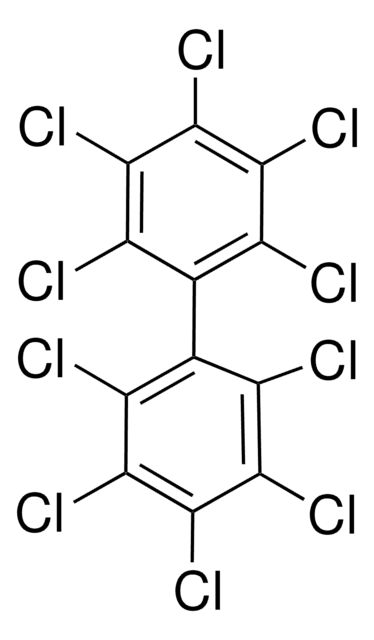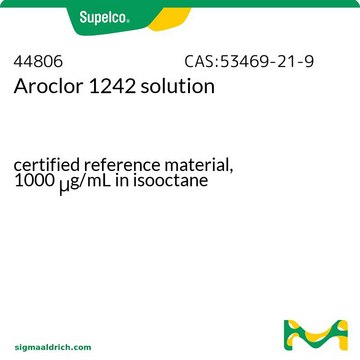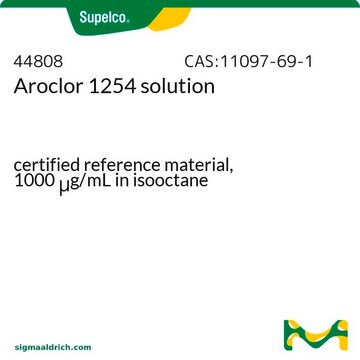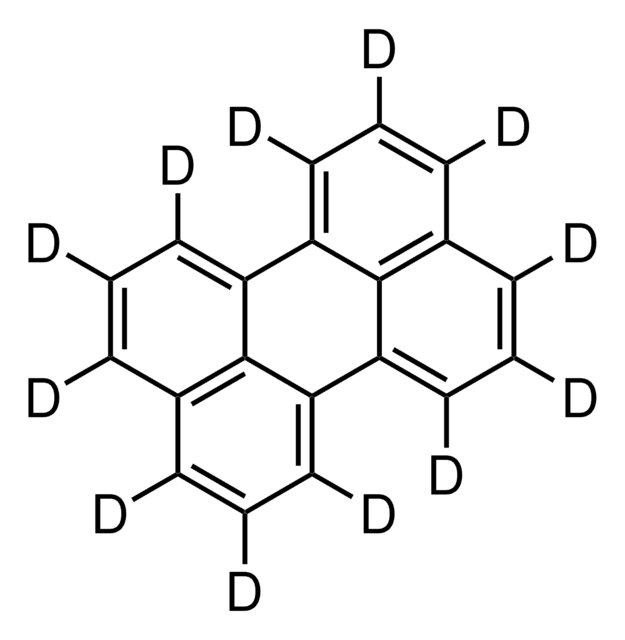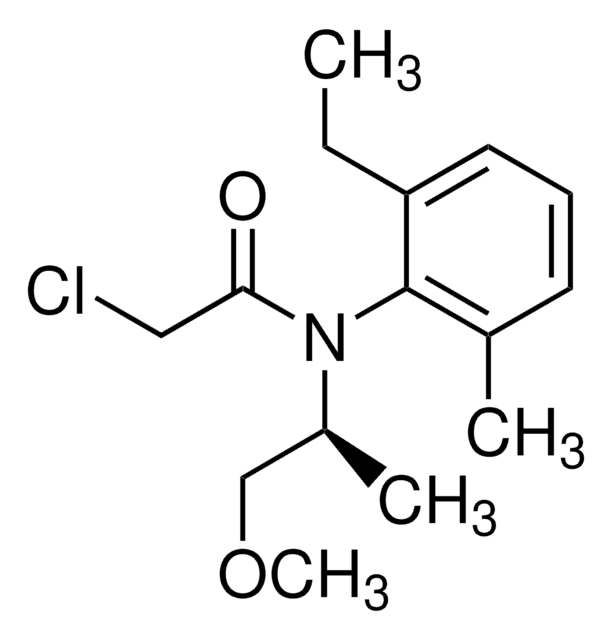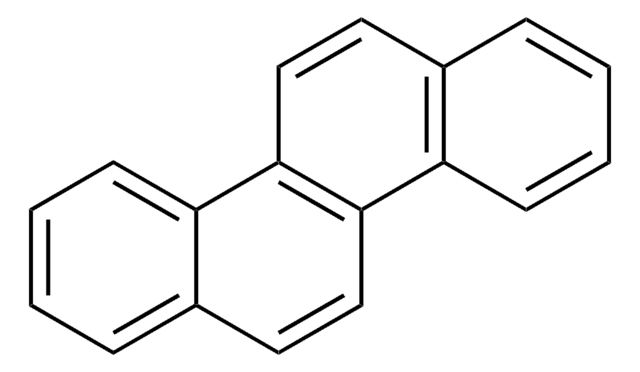48318
Decachlorobiphenyl solution
certified reference material, 200 μg/mL in acetone
About This Item
Produtos recomendados
grau
certified reference material
TraceCERT®
Agency
EPA 8082,8310
linha de produto
TraceCERT®
Certificado de análise (CofA)
current certificate can be downloaded
Características
standard type surrogate
embalagem
ampule of 1 mL
concentração
200 μg/mL in acetone
técnica(s)
HPLC: suitable
gas chromatography (GC): suitable
aplicação(ões)
environmental
Formato
single component solution
temperatura de armazenamento
2-30°C
cadeia de caracteres SMILES
Clc1c(Cl)c(Cl)c(c(Cl)c1Cl)-c2c(Cl)c(Cl)c(Cl)c(Cl)c2Cl
InChI
1S/C12Cl10/c13-3-1(4(14)8(18)11(21)7(3)17)2-5(15)9(19)12(22)10(20)6(2)16
chave InChI
ONXPZLFXDMAPRO-UHFFFAOYSA-N
Procurando produtos similares? Visita Guia de comparação de produtos
Aplicação
Outras notas
Informações legais
Palavra indicadora
Warning
Frases de perigo
Declarações de precaução
Classificações de perigo
Eye Irrit. 2 - STOT RE 2 - STOT SE 3
Órgãos-alvo
Central nervous system
Perigos de suplementos
Código de classe de armazenamento
3 - Flammable liquids
Classe de risco de água (WGK)
WGK 2
Ponto de fulgor (°F)
Not applicable
Ponto de fulgor (°C)
Not applicable
Escolha uma das versões mais recentes:
Já possui este produto?
Encontre a documentação dos produtos que você adquiriu recentemente na biblioteca de documentos.
Nossa equipe de cientistas tem experiência em todas as áreas de pesquisa, incluindo Life Sciences, ciência de materiais, síntese química, cromatografia, química analítica e muitas outras.
Entre em contato com a assistência técnica